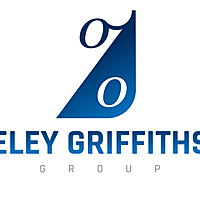3 requirements for markets to climb the ‘wall of worry’
1. The medium term direction of the US dollar needs to be resolved.
The US dollar typically trades in long, bull or bear campaigns. Durations of 10 years are not uncommon. This rally is approaching its five anniversary, so the current pause/consolidation is entirely normal. This house is viewing the present price action as a consolidation rather than a topping/exhaustion pattern.
Whilst US headline growth momentum may have eased back, there is no escaping the repair of the labour market, with unemployment now through the full employment number (5%) and employment averaging +230k per month, over the last year. Every other day the WSJ details anecdotes of how scarce labour is becoming in certain industries. Not surprising, consumer spending is on the rise and the September 2015 peak in the ISM inventory series suggests a destocking cycle is well under way. This eventually will lead to a restocking phase.
Core CPI and PCE stats have recently printed at the highest levels seen in a few years, however the US economic recovery viewed through a number of indicators remains brittle. The next hike in rates now seems a second half event. This week’s Chicago Fed National.
Activity Index suggested the US economy to be operating a notch below trend GDP at present. It is reasonable to posit that the recovering US economy is yet to fully reveal itself. The US dollar will recommence its rally the moment it becomes clearer that all is well with the economic expansion.
2. Have credit market anxieties passed?
An aggressive sell-off in high-yield (HY) and investment grade (IG) bonds occurred through h2 15, pricing credit spreads at 4 year highs. This coincided with significant ETF outflows, rising to crescendo in December. Scare mongering was rife, the energy sector issues (imminent defaults) had spread to basic industries and the retailer/consumer discretionary space was next. Enter 2016 and spreads have tightened up, primary issuance has been strong, and at acceptable margins, and HY and IG ETF’s have rallied sharply on renewed investor inflows, as the hunt for yield returned. Indications, albeit early, suggest credit markets are behaving rationally again.
3. Where is the US earnings cycle?
Expectations range from nil to 10% earnings growth for US stocks in 2016. A reasonable spread of outcomes available for investors to ponder. What is irrefutable are the negative impacts a depressed oil price and strong US dollar had on 2015 numbers. Comparable earnings will, therefore, be relatively easier to cycle over in 2016.
Further, the sizable CapEx reductions flagged amongst the oil/gas majors last year have now normalised and a new baseline is likely set for 2016 and beyond. A recovering oil price would suggest a positive delta here moving forward (note: Brent’s reaction to this month’s failed oil- output-freeze meeting in Doha, Qatar was very constructive ie crude rallied ~6%).
You cannot rule out that 2015 was an earnings reset year and there is the possibility that earnings in 2016 overshoot dampened expectations. At the time of writing, around 40% of the S&P500 had reported Q1 earnings, with most bettering expectations. The revenue surprise ratio is as strong as it has been in 8 quarters.
As an aside, it is worth noting that the spread between the S&P500 dividend yield and 10 yr bond yield is close to levels last seen in 2008, supporting the case for US equities.
Original article was taken from the Eley Griffiths website: (VIEW LINK)
3 topics

